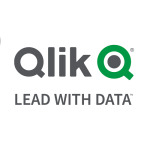What is our primary use case?
Domo is being used in quite a few areas. We're using it for financial reporting and analytics. Basic financial reports have just the numbers, but those kinds of reports don't answer your questions. Questions like "why?" and "where are the problem areas?" So, we're using it for business analytics to get insight into our financial performance.
We're a parts manufacturer, so we're also using Domo for tracking quality, including defects, warranties, and claims against the parts we manufacture.
We're using it for sales planning to give business insight into industry trends that might affect our sales. We're also using it to get insight into our sales results.
We're using it in our plants now — and this is newer — to track shipments and resources required so we can get the right resources where they need to be to load the trucks, based on when the parts are ready. That's actually an IoT use case.
In addition, we're using it to track our patents and our inventions, as a design company.
It started out with a couple of small use cases but it has blossomed very quickly. As soon as people see Domo for one case they come knocking on my door and say, "Hey, we'd like to use Domo as well."
How has it helped my organization?
This is just one example of many similar things, but in engineering we had directors and senior managers having to download spreadsheets full of financial reporting data every month and then manipulate the data and tweak it. Every manager and every division was doing it somewhat differently, making it difficult for the executive vice president to get a consolidated insight.
Not only was it all manual, but it was all done with pivot tables and spreadsheets. It took a tremendous number of hours every month from senior leadership just to create a basic "What's our situation?" And that didn't even get into insights into what led up to that situation.
One of the early KPIs was getting the financials in Domo. Now, the senior leaders all see the same thing. It doesn't matter which department you're from, it's all in the same format. None of them has to do anything, except for a couple of us who load the data into Domo. Once you load the data it automatically runs and updates all of the visualizations, and everybody is looking at the same thing.
We were able to put permissions into it as well, so if I'm in this department I only see this department's financials. If I'm one level up and I have five departments, I see those five departments' data. And if I'm the executive vice president I see the whole of engineering's data.
Just that one, simple implementation, which was one of many we've done, saves a tremendous number of hours by senior-level employees, every month, and provides a consistent answer across the organization.
What is most valuable?
The ease of use, overall, is one of the valuable features, as is the ease of setup. Other than making sure IT was aware of, and agreed with our proceeding, we did not need IT for any of the setup. The ease of setup is more valuable than you might think. The ease of configuring the security policies, setting up groups, and setting up personalized data permissions so that only certain people can see certain data — that stuff is amazing.
The ease of content creation — both the ETLs, meaning the extract, transfer, and loading of the data into Domo, and then the transforming of it into a structure that lends itself well to reporting — is a big feature.
Another key thing to understand is that Domo had built-in connections to more data types than any other BI tool, at the time we evaluated solutions. I suspect it still does because it has mushroomed out. It's even bigger than it was before. There are just so many ways to connect the data, both manually and automatically. They had 400-plus data connections and now they have 676. So, if you want to do analysis from Google Analytics, or Adobe Analytics, or Facebook, or the Department of Labor Resources, not to mention your own stuff, you're able to connect to them. We can get data from our internal database, on-premise, and automate that and load it in a timely way. That's been fantastic.
Another very easy-to-use feature is the creation of their reports, their little graphics, that they call "cards."
Domo really is extraordinarily full-featured, but it's really easy to use.
What needs improvement?
I'm actually a little hard-pressed to say what needs improvement because they keep changing it and adding new features. On a monthly basis, you come to work and, boom, there's a new release. And we've taken advantage of that.
The only things I could be critical of are extraordinarily minor tweaks that sincerely aren't worth mentioning.
For how long have I used the solution?
We've been using it officially for about a year-and-a-half. We went through a pilot and evaluation process before that, so our exposure to Domo has been over the course of two years.
What do I think about the stability of the solution?
As a service, we have never experienced any availability issues with Domo. We have not had a single outage.
There was one time where they did a major upgrade and they let us know a couple of months in advance that, in the middle of the night, on a certain date, Domo wouldn't be available from this hour to this hour. It was a very short period. Other than that one tiny maintenance window, I know we haven't had a single outage.
What do I think about the scalability of the solution?
You can automate the data collection, the data transformation, and the content creation. By content creation I mean the content generation, and for that, you have to initially create the cards, the pages, the dashboards, which is easy.
When the situation was one where people spent countless hours every month on various — between you and me, somewhat useless — data reports, with no insight, no drill-down capability, nothing, it was not a scalable approach. Now what we have is a scalable solution that provides business insights on-the-fly for folks, even on their phones, to answer difficult business questions, they don't have to spend countless hours manually trying to create that content in the first place.
The other thing is security. If you have to manually implement all of these security measures there's a cost. We haven't done this yet, although it's one of the things on deck this coming year, but you can set it so that security groups are automatically established for a person based on the department they're assigned to and on their level in Active Directory. That will grant them, or prevent them from having, access to specific content within the tool. That, once again, is scalable. In other words, we're not having to set up many individuals' security levels in Domo. We're in a position now to take advantage of that.
Even before making that leap, even manually setting up security groups and assigning people to those groups and creating security policies, is pretty easy and scalable. Going from sending out spreadsheets via email to the right people, to this kind of solution is a significant difference. It's a very scalable solution.
If we want to quadruple the size of our user base, meaning a lot more resources, or increase the content that we load into it because we have a new use case which means we're going to load another million rows of data a week into this environment, we can do so. If it was an on-premise solution we'd potentially have to buy servers, upgrade the CPU processors in the servers, upgrade the storage. With Domo, it just happens. We basically have unlimited data in our agreement.
Our first agreement was for three years and it was to get up to 650 users, and it was really intended primarily for senior management and above. But for that IoT solution for shipping, we have section leaders, people who are not managers in the quality group, who are using it. They had field reps who, instead of being out there serving the customers, had to create all of these reports on how things were going. Now, that all happens for them and that has saved a tremendous amount of their time.
We have individual performers, all the way up to the CEO, who have access. The meat-and-potatoes, the folks that really use it the most, are the senior managers and directors.
How are customer service and technical support?
When you find some minor issue within the app, there's a button you push and it goes off to Domo support and you don't have to make a phone call. But when I do make a phone call, because I have such a good relationship with our account executive, they get right on it.
In general, Domo's technical support is exceptional. I can go to support in the tool itself. There's a Help Center button and within that I have Domo University, "How To," Knowledge Base articles, and a very strong community forum. That's also where the Support button is. I just click on that and I can open a case and get a very timely response.
Which solution did I use previously and why did I switch?
The vast majority of people in our company who are using Domo now were using spreadsheets and pivot tables. The more sophisticated ones might have been using Access databases. As a corporation, the official tool selected previously was Yellowfin. It never really launched successfully. Yellowfin is a good tool, but it was a case where it went through our IT department but they didn't have the business focus or the right resources to dedicate to it. I think they're doing a Yellowfin 2.0 for some of the standard, global financials, but in general, it wasn't as easy to use and it would have significantly increased our dependency on our IT group. We wouldn't be anywhere near where we're at right now if we went with Yellowfin.
Just about all of these tools are decent, and they are a quantum leap from spreadsheets and pivot tables. We picked Domo because it was scalable, easy-to-roll-out, and did not burden IT. It has also been easy to create additional content and it's been effortless to maintain because it's software as a service.
How was the initial setup?
The setup was exceptionally easy because it's cloud-based, it's software as a service. That's one of the reasons we chose Domo over the competition, because our IT group is buried in a backlog of work. With Domo it's pretty much "Oh, here you go." In fact, the environment that they set up for us for our pilot — which took them a single day — is what we migrated to for use as our production environment once we decided to go with Domo. It couldn't have been easier.
The environment, the infrastructure, all of that was set up instantaneously. But we had built a core team and we wanted to establish naming conventions for files, rules, security policies, etc. With that very small, core team of passionate people, we did it in a week or two.
So there's the technical setup, and then there's the business side of things where you want to make sure you have a scalable solution once you launch. Thank God we did it that way because it went from a handful of users on day one to many users now. There is some thoughtful preparation that needs to happen to make sure that you set up your environment in a way, from the business side, that's scalable.
We did the implementation in something of in an Agile scrum-type way, although it was a hybrid because our company is used to Waterfall. We wanted to get some quick wins under our belt and let it grow organically. So we picked a couple of key measurements for each of the engineering group, the quality group, and the sales team, and we rolled them out in a month-and-a-half. We had been tinkering with it during the pilot so it wasn't like we were starting completely from square one. We carried over the results of our pilot.
We left ourselves some room for training. We thought that as we developed we'd decide what training was necessary. We actually did pay for a little bit of training but we haven't used it yet because we haven't needed it. It's that easy.
Our strategy has proven to be very successful. We started out small. We didn't over-commit or try to boil the ocean all at once. We grabbed a bucket of salt-water and "heated it up." We got everyone to like it and then come to us for more. It continues to grow on a daily basis.
What about the implementation team?
We have a sister company that heavily utilized Domo consulting. But in our case, we had some talented people. And the tool is so easy to use. We purchased consulting hours that we'll have for three years but we have hardly scratched the surface of those consulting hours. We've had odd, little issues. We did not need them to help us get going, beyond answering the basic questions.
What was our ROI?
We have absolutely seen return on our investment. We created a strong business case that it was going to pay itself off in well under a year for the 650 licenses, for the first three use cases that I mentioned, the low-hanging fruit. And we just crushed it, we killed it. In the meantime, we haven't even used up all of those 650 subscriptions. We're right around 500 right now, and we've doubled, if not tripled, the use cases using that original set of licenses.
We hit all of the boxes that we thought we would, right out of the gate, and then we doubled or tripled the use cases that we've been able to fit in, all with the original investment.
What's my experience with pricing, setup cost, and licensing?
Because it's software as a service, it's more expensive on the face of it. But there are a lot of variables. I don't have to pay for servers or for infrastructure. I don't have to pay labor for my IT organization to set up or maintain the environment. I don't have to pay for them to upgrade the software, and test it, etc., because when it rolls out, it is transparent and seamless for us.
But, because of that, it costs more, I imagine, than Sisense, or Yellowfin, or Power BI. A lot of those make it sound like they're inexpensive, but when you add in all the hidden costs and all of the overhead, it's probably comparable.
It's difficult to reach the right, mutually beneficial cost structure for us, and profit structure for Domo, because it's software as a service. In other words, you're paying for that convenience.
That's me searching for a criticism, although it's more a characteristic. They've been very flexible in negotiating with us. Still, one of our other shops has Sisense and they've got unlimited licenses for the whole facility for $65,000 for the year, so that's a sweet deal. But that other shop is doing everything behind the scenes.
Our 650 Domo licenses are really subscriptions because it's software as a service. With licenses you purchase, there might be annual maintenance, but you purchase them and you own those licenses. With the subscription, you're paying a fee, like Netflix, annually. Similar to Netflix where you don't own the movies, rather you're paying for the use of the environment, with Domo you don't need to set anything up and you have immediate access. You're renting the service.
Which other solutions did I evaluate?
We evaluated Yellowfin, Tableau, Microsoft Power BI, and Domo. Those were the ones we did in-depth evaluations on. We did a little more industry research beforehand, looking at industry reviews. The reason we narrowed it down to those four is that we knew of other companies within our organization that were using one of them. Qlik is great, but we didn't know of any other users of it within our organization at the time and we didn't want to be too rogue.
Tableau is outstanding. It came in at number-two in our evaluation, and I'm sure I'd be sitting here talking to you all thrilled about it, but Tableau seemed to be going in a new direction. There was the on-prem portion, plus the software that had to be installed on every PC using it for creating content, plus the web thing. It was a little more cumbersome and not as tightly integrated. There were all the different pieces you needed to install on your own infrastructure. They were switching to some cloud, but you were still reliant on on-prem, on-client, on-cloud. Other than that, it was close between Tableau and Domo.
We also heard feedback that, while on the surface, if you don't look at the infrastructure and the maintenance, Tableau looks like it's less expensive, when you really add it all up, and consider the lack of ease and convenience of use, it was going to probably cost more than Domo. That was why Domo beat Tableau.
Power BI was our least favorite, and part of that was because of who demonstrated it. They called it in, they didn't come to visit us, and they didn't do a really good job demonstrating it, but it doesn't seem as integrated. There's a client side, and a publishing side, and it doesn't seem to have as appealing a user interface. Power BI was the most confusing. It just was not nearly as elegant or easy to use, and certainly didn't have the integration.
Yellowfin seems very good. It is a web-based interface. We have it on-prem but I don't know if we've switched to its cloud version yet, as a corporation. But it just wasn't nearly as intuitive to use, and it had only a handful of data connections. It just was not nearly as simple for the business to use — and we wanted the business to use it. Yellowfin just wasn't nearly as robust or easy to use, and still would have required a lot of IT support.
What other advice do I have?
Domo even has a built-in Agile-scrum Kanban functionality. I don't want to say it's a lesson we've learned, because they've been doing this a long time, but it reaffirmed that while a lot of companies are still doing Waterfall, and the traditional "Where's your Gant chart and your Microsoft Project?" approach, I rebuffed that. Domo has upped that and I use a hybrid scrum, like Agile.
The biggest thing that I learned was from our sister company that loaded Domo up first. They tried to boil the ocean. They used a traditional approach and said, "Oh, requirements, and we have these 50 reports we want to put in Domo." They had all of the status updates in a traditional Microsoft Project structure, with PowerPoint slides to present to leadership and spreadsheets to track issues. They put so much overhead on themselves. But they were behind schedule, plus they used Domo consulting.
So the biggest lesson is this: You want to have the business create the content for the business. That's why we picked this tool. You don't want to have someone else involved, whether it's a consultant, or IT, and here's why. In every business department, there is the person who is creating the pivot tables, knows Access, and has the aptitude to create this content. The benefit of that person doing it is that they know the business. And with Domo, they don't have to go fill out some project-request with IT or some other organization and say, "Oh, we want a new report or a new card." Then, that other organization has to review it and put it in their backlog of work. And when they get to it they have to have requirements-gathering and all of this discussion. Finally, there's a document that meets the requirements and they say, "Okay, now let's create a draft." Back-and-forth, traditional Waterfall takes forever.
I had someone come up to me and say, "Hey, John, we need XYZ." In 15 minutes I had created new content. But it's still controlled because we have a very small structure, a core team, which has key content creators from each critical business unit and those people have the poetic license to do as they please.
It's so much quicker. That's why we've been able to implement so much. Domo is not like traditional software development where you're "pouring concrete" and you better get the forms designed and measured perfectly, because once that concrete sets it's a bear to have to break it out, and reform, and repour. With Domo, it's more like molding clay. So when someone says, "Oh, well, I don't like that." "Okay, let me change the color," or, "Let me change this. Let me add a filter." It's all on-the-fly and very dynamic.
So the biggest lesson is that, when you get something like this, don't turn it into traditional, stodgy, bureaucratic Waterfall. I had to spend very little time providing status updates. I had the risks and issues in Domo, using the project functionality that is free and that comes with it. The list of all of the things that we wanted to consider was in the Kanban and to-do backlog, and then in-progress, and completed. It was so easy to do it organically, starting small, versus, "Oh, what are all the 50 reports we want replace with Domo?"
IT is just there to support us when we need data from some huge enterprise system. They'll say, "Oh yeah. Let us set up an automatic feed into Domo."
You can tell I'm a big advocate for Domo. I'm not alone. Every time I show it to someone they go crazy over it and they want more. It's harder to find someone who is not excited about it, in terms of both the content users and the content creators.
There is competition because we're a global company. One division has been using Microsoft Power BI, another is using Sisense, and we have one plant using Tableau. I think it's going to evolve. I foresee that Domo will be around, unless there's some bizarre, unforeseeable event. I can't see Domo going away anytime soon.
Regarding maintenance, in terms of the solution itself, we don't need anyone because it's software as a service. In terms of the content, we have, for example, two people in the whole of the quality assurance and warranty group who are part of this core team. We have two people from the sales team who do all of the business planning content stuff. When we added to the credit department, we added someone in that department who maintains all of that content. Is it a full-time job for them? Not even close, but they're responsible for it. On the engineering side, it's mostly me, but I'm also leading the whole initiative.
Right now, the core team has six people, and then we have a stakeholders' committee that is going to start meeting once a month. We were meeting more frequently during the first year. There's a slightly wider audience of about 15 people who are going to be invited to update them on the status, what we're working on, and to find out if they have any questions. But it's a very small overhead. It's a resource-saving thing. The headcount that was creating all of this content before was a small army, because every director and senior manager had to do their own little flavor of the reporting.
Disclosure: PeerSpot contacted the reviewer to collect the review and to validate authenticity. The reviewer was referred by the vendor, but the review is not subject to editing or approval by the vendor.












